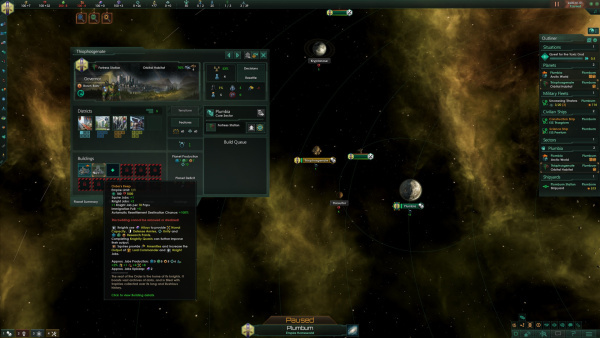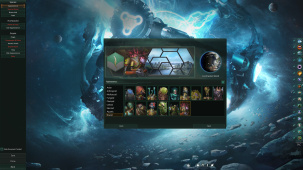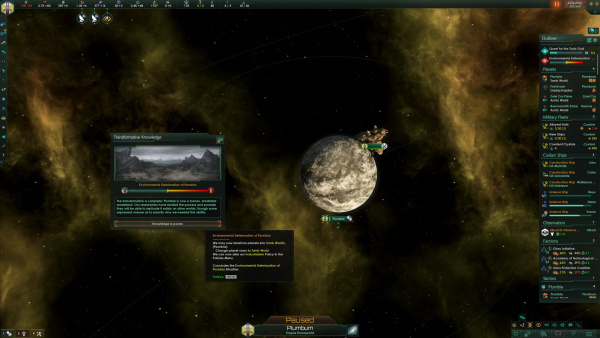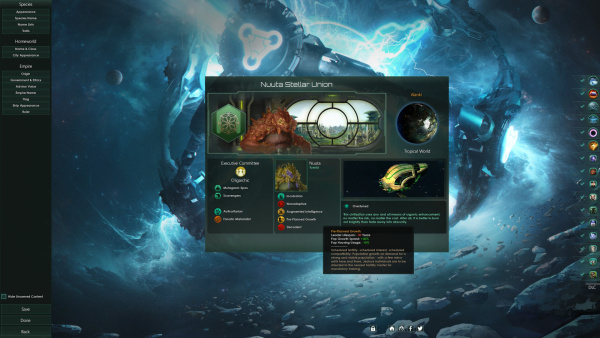Game Check: Stellaris – Toxoids Species Pack and Patch 3.5 “Fornax” – News
The science fiction grand strategy Stellaris by Paradox is still proving to be a hit six years after its release. After the big expansion overlord (in the game check) in June of this year is now that Toxoids Species Pack appeared. To what extent the new content is worth buying, I’ll tell you in this check and also give you my assessment of the new patch 3.5 “Fornax”.
 |
| Your knights orbit your home planet in a habitat. |
toxoids
Many of the new origins, traits, and civics have both positive and negative modifiers. Originating in Knights of the Toxic God, you are in search of a divine entity that once turned your home planet into a toxic wasteland. For this you start with knights in a habitat that circles over your planet. The Knights produce Unity and Research. The search for the deity, based on the search for the Holy Grail, turns out to be what is probably the longest series of events in the strategy game to date and demands you make decisions again and again until the brilliant end. This mainly brings buffs for your knights. For example, I have always backed better research. The knight origin has it all, because you have to invest at least 10 percent of the alloys gained through jobs and 20 percent of your credits in the quest. If you invest more, it progresses faster and you also get buffs faster.
The Overtuned origin allows you to make genetic modifications on the spot. The special traits bring huge bonuses and only cost one point, but at the expense of the lifespan of the leaders. You can also change the selected properties again.
 |
| The new portraits, ships (their color adapts), the cityscape and the advisor voice turned out very well. |
You can choose three new, “normal” properties at the beginning of the game. I found the incubator particularly interesting. With this you increase the reproduction rate of your populations as long as you have less than 37. After that, you gradually collect Mali, up to 10 percent. It is therefore suitable for rapid growth strategies. Toxic brings you advantages and disadvantages. So you have at least 30 percent habitability on planets, but the maximum value also drops by 30 percent. Later you can still unlock Exotic Metabolism, with buffs to habitability, growth and boss age. In return, your pops cost exotic gases to maintain. This combines with perhaps the weakest new trait, Inorganic Breath: Pops cost 50 percent more to maintain, but exhale usable gas.
For the civics, Toxic Baths help population growth. As a recycler, you benefit from shot-up battleships in three ways: you get research, resources and, if necessary, even ships. Very exciting is “Relentless Industrialists”. As soon as you have ten pops on a planet there is a special building, your home planet even starts with one. This increases production at the expense of population growth. Small problem: You pollute your planet, which can ultimately even develop into a Tomb World. But that can be good! Namely, if you originate from the post-apocalypse expansion apocylipse plays, because then the Tomb World is your preferred habitat.
 |
| The exploitation of the planet leaves it devastated. But some species feel right at home there. |
Patch 3.5 “Fornax”
Patch 3.5 “Fornax” also brings new content, for example two archaeological sites that are made for certain forms of government (Hive and machine intelligence) for the first time. There are also two new levels of difficulty: For complete beginners and hard-core minmaxers. As a professional, you can also play all three endgame crises with increasing difficulty back to back. If you use the scaling difficulty, you can now let the AI reach its peak in the midgame. New star systems and an anomaly are among the free additions as well as 16 achievements.
The artifacts have been completely reworked. Cultural workers are part of the game again and work from monuments. They ensure the unity and attraction of government ethics. They also give bonuses according to your ethics. I really like that megastructures got their own category in the outliner and are so much easier to navigate to. You can also see in the outliner whether starbases can be upgraded and upgrade them directly there. Small, nice improvements include that the AI doesn’t keep bombarding you with suggestions that you’ve let run out. Thanks to the new 10-year cooldown. In general, the AI made a good impression, moved fleets well and attacked with allies. She’s also not that keen on becoming your vassal anymore. You can do the numerous major and minor balancing changes and bug fixes see the extensive patch notes.
 |
| Genetic manipulation at the expense of lifetime. |
Conclusion
The innovations from Toxoids are primarily based on rapid growth opportunities, but usually have disadvantages. They basically rely on a good understanding of the game mechanics and are aimed more at experienced players. The expansion alone offers a lot of fun and scope for experiments. You have an even bigger playground when you combine it with other expansions like Apocalypse. In this respect, the team has done a great job: Toxoids is very good on its own, but also fits wonderfully into the context of the previous expansions. The patch also left a very good impression with its improvements, balancing adjustments, comfort features and small extensions. The Toxoids Species Pack gets a clear buy recommendation for every experienced Stellaris player.
- grandstrategy
- Single and Multiplayer
- Intermediate to Pro
- Price: 9.99 euros
- In one sentence: Extensive Species Pack that opens up many new ways to play and has good cosmetics on board.
Reference-www.gamersglobal.de